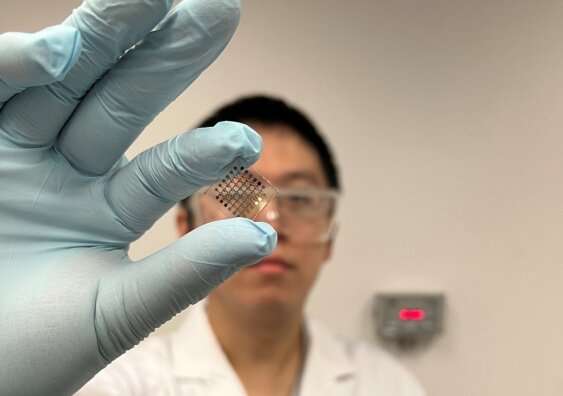Researchers at the University of New South Wales (UNSW) Sydney have designed an electronic device modeled after human skin that detects mechanical stimuli for gesture and handwriting recognition.

Sensory organs such as skin in biological nerve systems can detect stimuli, and neurons and synapses transmit the generated signals to the human brain for processing and response. Physical contact through the skin enables people to feel pressure, pain and interact with the surrounding environment.
Researchers from the School of Material Sciences & Engineering at University of New South Wales (UNSW) Sydney have created an electronic device inspired by human skin that can detect mechanical stimuli for information processing, including gesture and handwriting recognition, with minimal power consumption. The system mimics human skin and demonstrates various skin-like capabilities.
What is E-skin?
Artificial skins are transforming sensing technology to meet demands for real-time monitoring of vitals like blood pressure, temperature, and oxygen levels. E-skins have the potential for measuring the health status of athletes and people in hazardous environments, in addition to their use in healthcare settings. Newly developed stretchable strain sensors mimic human skin perception by detecting pressure, tension, and weight and converting external stimuli into electrical signals. As per the researchers, most sensors lack signal processing and require a separate processor, consuming more electricity. Without processing functionality, they cannot match human skin’s sensory function.
Combining sensors with neuromorphic computing devices
The research team sought inspiration from the human nervous system to address current artificial perceptual system limitations. The team of researchers have developed the latest technology using biological synapses, which are essential for brain memory and learning functions as the foundation. They imitated human synaptic behaviors by controlling the device’s conductance with electric stimuli that corresponded to the strength of the connection between two neurons. The system comprises a neuromorphic computing device and highly responsive sensors. The researchers explain that the highly sensitive sensors generate different electrical signals under various deformation. Combining them with the device results in a smarter, more energy-efficient system that consumes less power. The sensors detect human motion and monitor physiological signals such as wrist pulse, respiration, and vocal cord vibration, while the neuromorphic computing device interprets the sensing information for gesture recognition.
Promising potential and future work
The study offers insights into designing artificial synapses and sensors for neuromorphic computing and AI. Although it’s a significant step in E-skin development, recognizing complex gestures remains challenging, requiring material and device modifications despite successfully identifying simple gestures like thumbs up or fists. The researchers aim to enhance the system’s sensing and information-processing capabilities and broaden its usage in tactile and visual perception.
Reference : Fandi Chen et al, Bio‐Inspired Artificial Perceptual Devices for Neuromorphic Computing and Gesture Recognition, Advanced Functional Materials (2023). DOI: 10.1002/adfm.202300266






